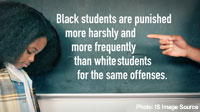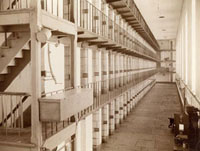News & Commentary
Disability Rights Ohio calls for Enforcement of Ohio Department of Education Rule on Restraint and Seclusion
By Danielle Gray

Discrimination Shouldn’t Be Part of the Dress Code
Cassie Chenoweth is a high school intern with the ACLU of Ohio.

Chains Hurt Children: The Harm of Restraints
This is the fifth in a series of posts on the topic of juvenile shackling. The automatic shackling or use of restraints on youth in juvenile court does not promote safety. Instead, it actually promotes humiliation, hurts children’s mental and emotional stability, and fails to teach youth the concept of respect. Most children in the juvenile court system are accused of low-level, sometimes non-criminal offenses and pose no risk. Yet, they are forced to wear chains and other degrading restraints that leave long lasting emotional scars.

American Bar Association Opposes Automatic Shackling of Juveniles in Court
This is the fourth in a series of posts on the topic of juvenile shackling. More often than not, progress happens in steps. That was certainly true of the American Bar Association’s (ABA) evolving policy on juvenile justice. In 2014, the ABA passed a resolution urging the “development of trauma-informed, evidence-based approaches and practices on behalf of justice system involved children and youth who have been exposed to violence, including child abuse and neglect or other crimes and those subject to delinquency or status offence proceedings.” The resolution also noted that, “Some routine juvenile justice practices, such as solitary confinement, isolation, and restraint, can further traumatize youth and cause them additional harm.”

Stay Informed
Sign up to be the first to hear about how to take action.
By completing this form, I agree to receive occasional emails per the terms of the ACLU’s privacy statement.
By completing this form, I agree to receive occasional emails per the terms of the ACLU’s privacy statement.




